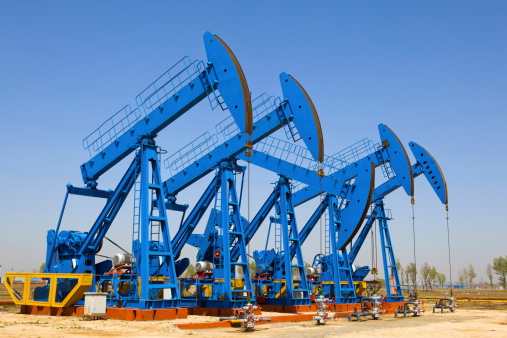SandRidge Energy Inc. (NYSE: SD) has been doing what it can to remain either viable on its own and to remain relevant to investors. It is likely too soon to warn about expecting the worst case scenario for SandRidge, but even two weeks ago we read between the lines of what Standard & Poor’s was saying: things are going from very bad to far worse.
The company has a new plan now to pay down part of its debt, but analysts and investors just do not seem to be impressed. SandRidge announced that it will be commencing a private offering of $1 billion in total principal of senior secured notes due 2020. The notes are secured on a second lien priority basis and guaranteed by each of SandRidge’s restricted subsidiaries that will guarantee the company’s revised revolving credit facility. The company’s press release indicated that the net proceeds from this offering will go toward repaying borrowings under SandRidge’s existing revolving credit facility and for general corporate purposes.
SandRidge currently has a market cap of roughly $556 million. The company has a large debt overhang already. This has added some fuel to the fire regarding concerns of the company’s future.
ALSO READ: Has the Endless Growth of Dividends and Buybacks Peaked?
Previously, 24/7 Wall St. had reported on SandRidge’s earnings, where the company had an adjusted net loss of less than $0.01 per share on revenue of $215.3 million in the first quarter. At the same time, SandRidge produced 7.9 million barrels of oil equivalent, 50% of which was crude oil and natural gas liquids. First-quarter production averaged 87.7 thousand barrels of oil equivalents per day. This represents a 1% decrease in average daily production from the full fourth quarter of 2014.
Credit Suisse’s analysts Arun Jayaram and Bryan Baritot were very negative earlier in May with an Underperform rating and a price target of $0.80 in SandRidge shares. This implied downside of closer to 50% at the time, and would be a loss of closer to one-third of its value today.
The highlight of the first quarter was the significant cash burn, with SandRidge’s net debt balance increasing by an incredible $345 million sequentially, in a period when the company benefited from $137 million in cash hedging gains. As a result of the significant cash burn, management signaled that it was “evaluating alternatives to bring our cash generation and debt levels in line.” Credit Suisse suggests that SandRidge might be considering some sort of equity raise or other type of near-term financing. Does that mean that this offering might not be the end?
Considering these results from the first quarter, updated oil and natural gas strip prices, and accounting for the recent debt-to-equity swap, Morningstar reduced its fair value estimate to $2 per share from $3. The analyst on the call, Mark Hanson, explained the valuation:
Our fair value estimate is based on our five-year discounted cash flow model and an assessment of trading multiples, comparable transactions, and longer-term resource potential and implies forward enterprise value/EBITDA multiples of 7.5 times in 2015 and 7.7 times in 2016, as a result of declining profitability. While it’s still in the early phases of its transition to liquids, we expect SandRidge to deliver better results than it has historically, with production growth and mix shift leading to improvement in operating margins and incremental returns on capital in the outer years of our forecast.
ALSO READ: 10 Stocks to Own for the Next Decade
Shares of SandRidge were down about 6% to $1.13 Thursday morning, in a 52-week trading range of $1.07 to $7.43. The stock now has a consensus analyst price target of $1.29.
Again, bad to worse. Can new management help, or have things gone too far?
The Average American Is Losing Momentum On Their Savings Every Day (Sponsor)
If you’re like many Americans and keep your money ‘safe’ in a checking or savings account, think again. The average yield on a savings account is a paltry .4%1 today. Checking accounts are even worse.
But there is good news. To win qualified customers, some accounts are paying more than 7x the national average. That’s an incredible way to keep your money safe and earn more at the same time. Our top pick for high yield savings accounts includes other benefits as well. You can earn a $200 bonus and up to 7X the national average with qualifying deposits. Terms apply. Member, FDIC.
Click here to see how much more you could be earning on your savings today. It takes just a few minutes to open an account to make your money work for you.
Thank you for reading! Have some feedback for us?
Contact the 24/7 Wall St. editorial team.




